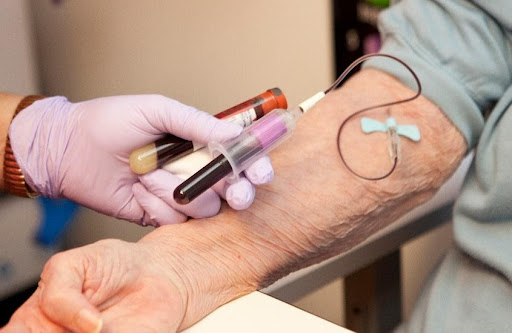Not known Details About Northeast Medical Institute - New Haven Campus Phlebotomy Course & Cna Class
Not known Details About Northeast Medical Institute - New Haven Campus Phlebotomy Course & Cna Class
Blog Article
A Biased View of Northeast Medical Institute - New Haven Campus Phlebotomy Course & Cna Class
Table of ContentsIndicators on Northeast Medical Institute - New Haven Campus Phlebotomy Course & Cna Class You Should KnowThe smart Trick of Northeast Medical Institute - New Haven Campus Phlebotomy Course & Cna Class That Nobody is Discussing4 Simple Techniques For Northeast Medical Institute - New Haven Campus Phlebotomy Course & Cna ClassExcitement About Northeast Medical Institute - New Haven Campus Phlebotomy Course & Cna ClassAn Unbiased View of Northeast Medical Institute - New Haven Campus Phlebotomy Course & Cna ClassGetting My Northeast Medical Institute - New Haven Campus Phlebotomy Course & Cna Class To Work
The use of such gadgets need to be come with by various other infection avoidance and control practices, and training in their use. Not all safety gadgets are relevant to phlebotomy. Before choosing a safety-engineered gadget, customers should thoroughly investigate readily available devices to determine their proper usage, compatibility with existing phlebotomy methods, and efficacy in protecting staff and clients (12, 33).For setups with reduced resources, cost is a motoring aspect in procurement of safety-engineered devices - Phlebotomy Courses. Where safety-engineered devices are not readily available, knowledgeable use of a needle and syringe serves. Unexpected exposure and details info about an occurrence ought to be videotaped in a register. Support solutions ought to be promoted for those who undertake unexpected exposure.
labelling); transport problems; interpretation of results for scientific monitoring. In an outpatient department or clinic, offer a dedicated phlebotomy workstation containing: a clean surface area with 2 chairs (one for the phlebotomist and the various other for the person); a hand clean basin with soap, running water and paper towels; alcohol hand rub. In the blood-sampling area for an outpatient department or clinic, supply a comfy reclining sofa with an arm remainder.
Not known Factual Statements About Northeast Medical Institute - New Haven Campus Phlebotomy Course & Cna Class
Make certain that the indicators for blood sampling are plainly defined, either in a written procedure or in documented instructions (e.g. in a research laboratory type). At all times, adhere to the approaches for infection avoidance and control listed in Table 2.2. Infection avoidance and control methods. Collect all the equipment required for the procedure and area it within risk-free and very easy reach on a tray or cart, guaranteeing that all the things are clearly noticeable.
Introduce yourself to the client, and ask the individual to mention their complete name. Examine that the research laboratory kind matches the person's identification (i.e. match the patient's information with the research laboratory kind, to make certain exact identification).
Make the patient comfy in a supine placement (if feasible). Area a tidy paper or towel under the client's arm. Go over the test to be done (see Annex F) and acquire verbal permission. The client has a right to refuse a test at any type of time before the blood tasting, so it is essential to make certain that the person has actually comprehended the treatment.
5 Easy Facts About Northeast Medical Institute - New Haven Campus Phlebotomy Course & Cna Class Explained
Expand the patient's arm and inspect the antecubital fossa or lower arm. Situate a vein of a great dimension that is noticeable, straight and clear.
DO NOT put the needle where veins are diverting, since this boosts the opportunity of a haematoma. The vein should be visible without applying the tourniquet. Locating the capillary will assist in establishing the correct dimension of needle. Apply the tourniquet concerning 45 finger sizes above the venepuncture site and re-examine the blood vessel.
Specimens from central lines bring a risk of contamination or wrong lab test results. It is acceptable, but not perfect, to attract blood samplings when very first introducing an in-dwelling venous device, prior to connecting the cannula to the intravenous liquids.
Northeast Medical Institute - New Haven Campus Phlebotomy Course & Cna Class Can Be Fun For Anyone
Failure to enable sufficient call time raises the threat of contamination. DO NOT touch the cleansed site; in specific, DO NOT put a finger over the vein to direct the shaft of the subjected needle.
Ask the individual to develop a fist so the veins are more popular. Enter the capillary promptly at a 30 level angle or less, and proceed to present the needle along the blood vessel at the easiest angle of entry - CNA Classes. Once sufficient blood has been collected, launch the tourniquet prior to taking out the needle
Rumored Buzz on Northeast Medical Institute - New Haven Campus Phlebotomy Course & Cna Class
Withdraw the needle gently and apply mild stress to the site with a tidy gauze or completely dry cotton-wool sphere. Ask the person to hold the gauze or cotton wool in area, with the arm extended and elevated. Ask the patient NOT to flex the arm, because doing so causes a haematoma.

Northeast Medical Institute - New Haven Campus Phlebotomy Course & Cna Class Fundamentals Explained
Do not press the syringe plunger since added stress increases the danger of haemolysis. Where possible, keep the tubes in a shelf and relocate the shelf in the direction of you. Infuse downwards right into the appropriate coloured stopper. DO NOT remove the stopper because it will release the vacuum. If the sample tube does not have a rubber stopper, infuse incredibly slowly into the tube as reducing the pressure and velocity used to move the sampling decreases the danger of haemolysis.

Report this page